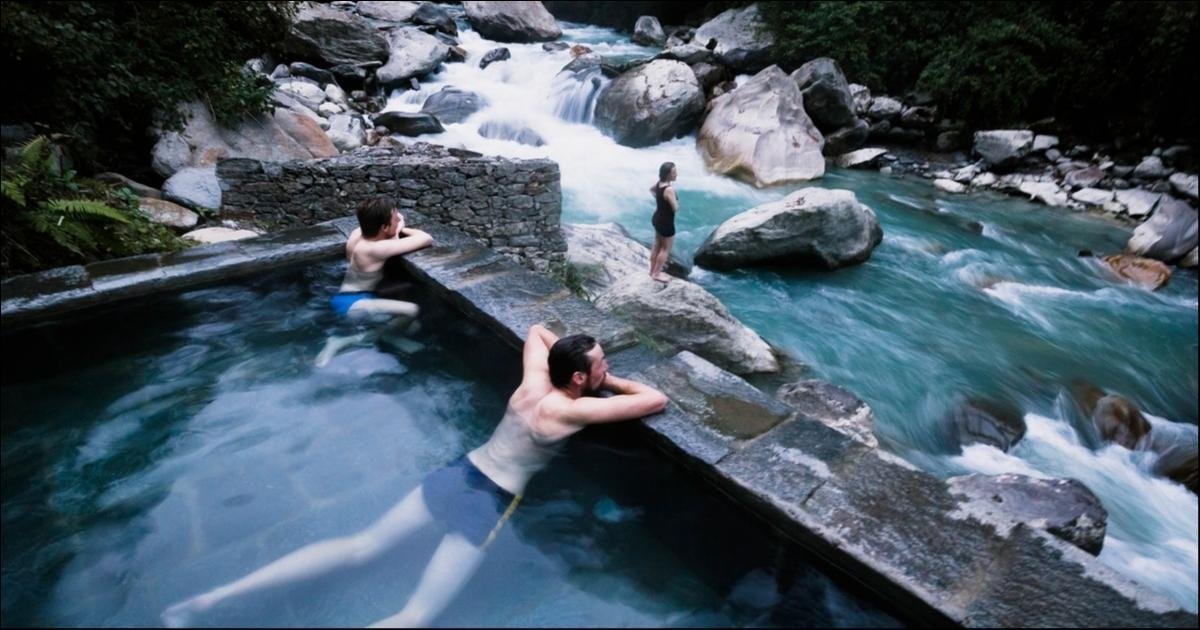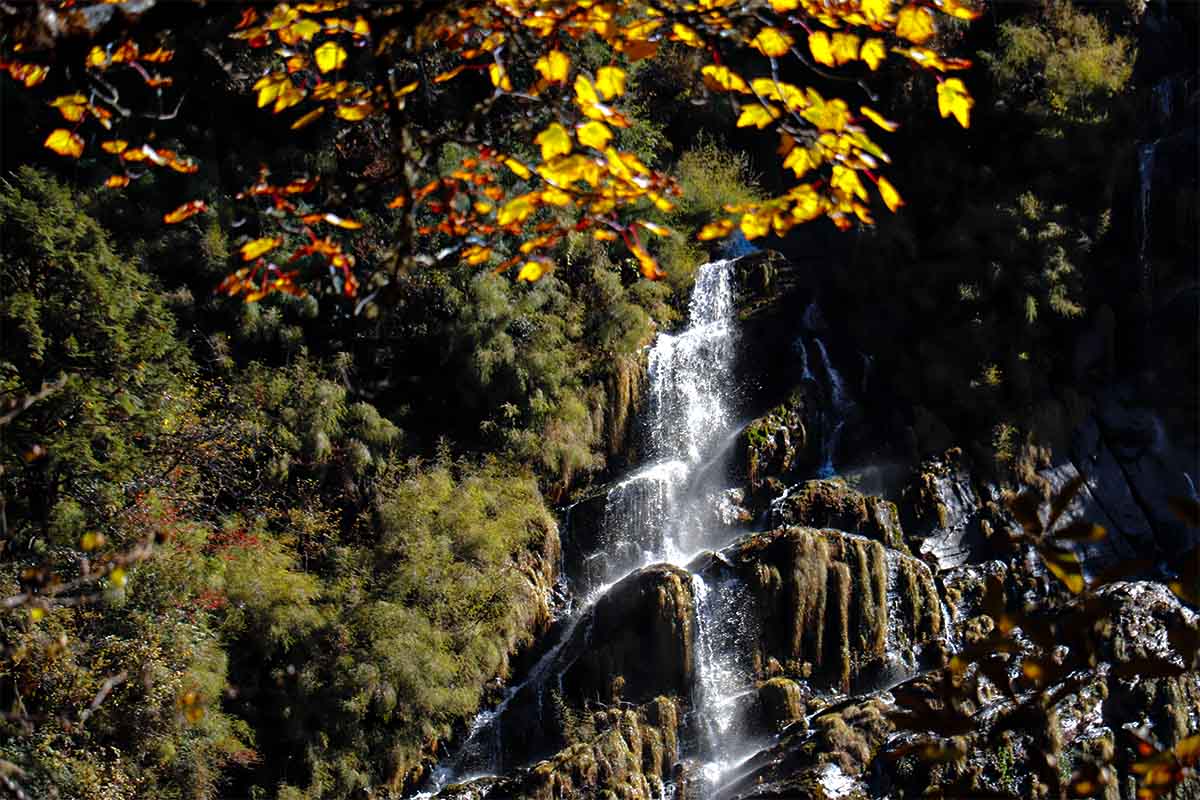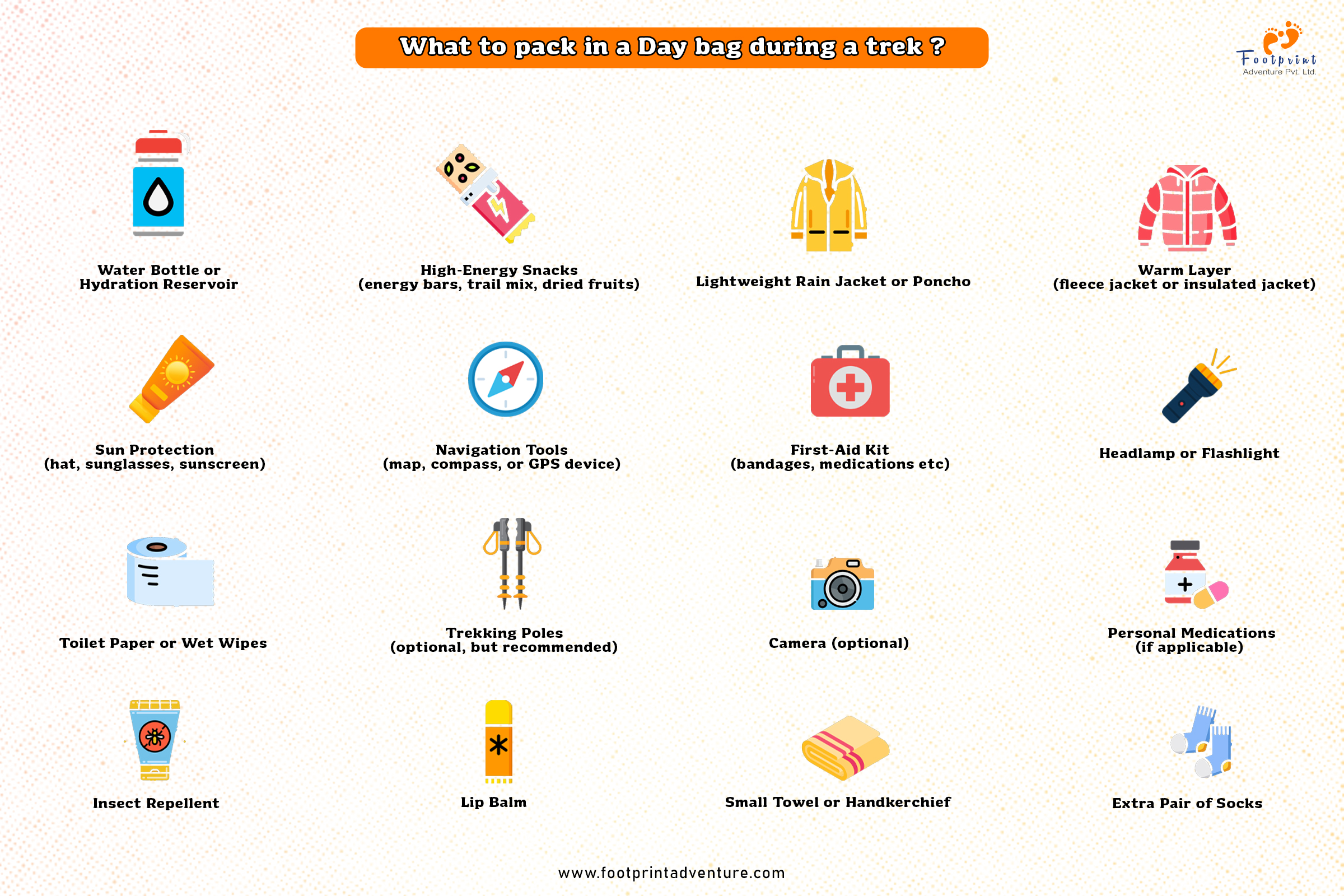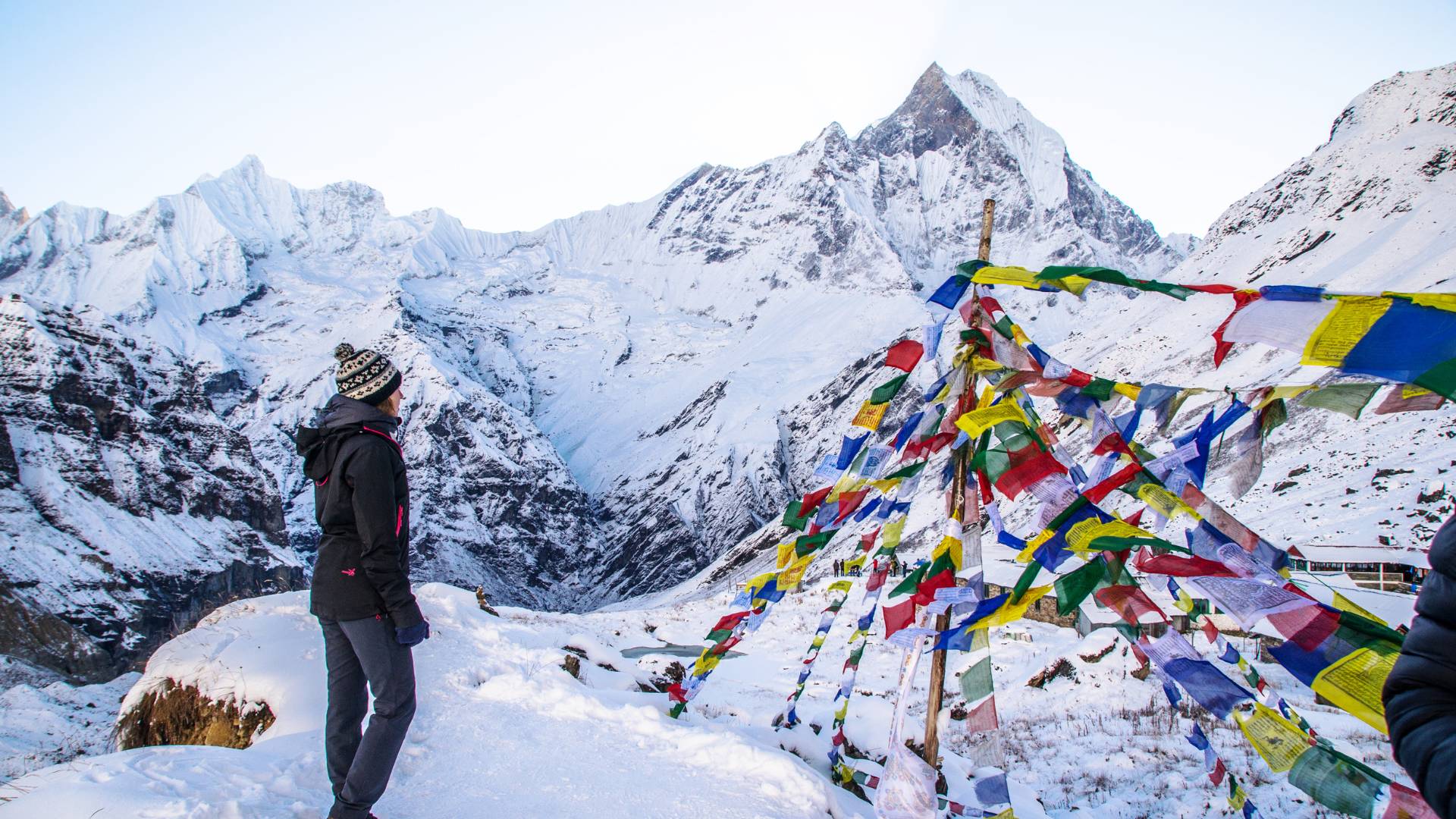Understanding the Annapurna Base Camp Trek
The Annapurna Base Camp trek is nestled in the heart of Nepal’s Himalayas and offers some of the most spectacular mountain views in the world. It’s typically a 7 to 12-day trek (depending on your pace and starting point), and it takes you through terraced farmlands, dense rhododendron forests, and charming Gurung villages before finally reaching the base camp at an altitude of 4,130 meters (13,550 ft).
Some key highlights of the ABC trek include:
- Panoramic views of the Annapurna Massif: These include the majestic peaks of Annapurna I (the 10th highest mountain in the world), Machapuchare (the iconic "Fishtail" peak), Hiunchuli, and more.

- Immersion in local culture: The region is home to the Gurung and Magar communities, who have a rich cultural heritage that trekkers often experience through homestays and teahouse lodges.
- Natural hot springs: Many trekkers love relaxing in the hot springs at the Jhinu Danda to soothe tired muscles.

Now that you know a bit about what awaits, let's dive into the tips to ensure you’re well-prepared for this epic trek!
Best Time to Trek Annapurna Base Camp
Timing your trek is crucial to enjoy good weather, clear views, and a comfortable experience. The best times to trek to Annapurna Base Camp are during the pre-monsoon (spring) and post-monsoon (autumn) seasons.
- Spring (March to May): This is one of the most popular times to trek, as the weather is mild, the skies are mostly clear, and the rhododendron forests are in full bloom. Plus, there’s a great chance of spotting wildlife.

- Autumn (September to November): This period is considered the best time for trekking. The monsoon rains have cleared the dust from the atmosphere, so you’re likely to enjoy the sharpest views of the mountains. Temperatures are comfortable, though nights at higher altitudes can get chilly.
Avoid trekking in the monsoon season (June to August) due to heavy rains, leeches, and the increased risk of landslides. Winter (December to February) treks are possible but challenging due to cold temperatures and snow at higher altitudes.
Tip: Always check the local weather forecast before setting out on your trek. Conditions in the mountains can change rapidly.
Physical Preparation: Get Fit Before You Trek
You don’t need to be a mountaineer to reach Annapurna Base Camp, but a good level of fitness is important. The trek involves long hours of walking (5-7 hours daily) on rugged terrain, and while the altitude isn’t extreme, it still requires strength and stamina.
Here’s how you can prepare:
- Cardio training: Start incorporating cardio exercises like running, cycling, or swimming into your routine a few months before your trek.
- Leg and core strength: Hiking up and down the stairs or doing squats, lunges, and core exercises can help strengthen your legs and improve your balance.
- Practice hikes: If possible, do some practice hikes in your local hills or mountains with a daypack to simulate the trekking conditions.
Remember, trekking at altitude requires a different kind of endurance, so it’s not just about being physically fit but also learning to pace yourself.
Packing List: What You Should Carry
Packing for the Annapurna Base Camp trek requires some careful planning. You want to be prepared for a variety of weather conditions, but you also need to keep your backpack light. Here’s a basic checklist:
Clothing
- Base layers: Moisture-wicking thermal tops and bottoms.
- Insulating layers: A fleece jacket and down jacket for colder nights.
- Outer layers: Waterproof and windproof jacket and pants for sudden weather changes.
- Trekking pants: Comfortable, quick-drying pants.
- Gloves, beanie, and scarf: Essential for the cold mornings and evenings.
Extras
- Sunscreen, lip balm, and sunglasses: The sun can be harsh, especially at higher altitudes.
- First aid kit: Include basic medicines for altitude sickness, blisters, and minor injuries.
- Snacks: Energy bars or trail mix for quick boosts of energy.
Packing smart is the key. Many trekkers opt to hire a porter to carry the bulk of their load, leaving them with just a daypack to manage.

Tip: Take only what you need but see that it’s all convenient. There are many times that trekkers hire a porter who can carry up to 15 kgs of your belongings more making the trek easier.
Altitude Sickness: How to Stay Safe
One of the biggest concerns for trekkers heading to Annapurna Base Camp is altitude sickness, also known as Acute Mountain Sickness (AMS). This occurs when your body struggles to adapt to lower oxygen levels at higher altitudes.
Symptoms of AMS include headaches, dizziness, nausea, and fatigue. In severe cases, it can lead to dangerous conditions like High Altitude Pulmonary Edema (HAPE) or High Altitude Cerebral Edema (HACE).
Here’s how to minimize the risk:
- Ascend slowly: Give your body time to adjust by not gaining too much altitude in a single day. The golden rule is "trek high, sleep low"—if you trek to a high point during the day, descend slightly to sleep at a lower elevation.
- Stay hydrated: Drink plenty of water and avoid alcohol, as it can dehydrate you and make symptoms worse.
- Listen to your body: If you start feeling symptoms of AMS, don’t push through it. Rest, hydrate, and if needed, descend to a lower altitude to recover.
Most trekkers to Annapurna Base Camp don’t need supplemental oxygen, but it’s important to carry basic altitude medications like Diamox (consult your doctor before taking any medication).
Tip: Consult with your doctor about taking Diamox to help with acclimatization. Always listen to your body and take breaks when needed.
Choosing the Right Trekking Agency or Going Solo
One of the big decisions for your ABC trek is whether to go with a guided trek through a trekking agency or to go independently.
Trekking with a guide/agency
Pros: Being with a guide provides security, cultural awareness, and less stress on those aspects on the picture than with an independent traveler. Camps are one of the services handled by the agencies which include accommodation, permits, as well as transport among others. Also you will have someone to carry your heavy equipments that is a porter.
Cons: It is somewhat costly as compared to trekking alone, but it could be worth the spend especially for he ones who want to avoid risks entirely.
[H3] Trekking independently
Pros: This is particularly good if you are familiar with high altitude areas and if you do not have a problem with map reading. Thus, you have more options to change your schedule and losing some amount of money by planning everything on your own.
Cons: It also implies that you’ll have to acquire your permits, booking your accommodation and transport, which will consume a lot of your time. That means one is also in constant danger of a lone trekker.
Read Our Blog: Everest Base Camp Trek vs Annapurna Base Camp Trekand Annapurna Base Camp Trek Vs Annapurna Circuit Trek
Permits Required for the Annapurna Base Camp Trek
Before you hit the trail, you’ll need two permits to trek in the Annapurna region:
- Annapurna Conservation Area Permit (ACAP): This supports conservation efforts in the region.
- Trekkers’ Information Management System (TIMS) card: This helps track trekkers for safety purposes.
These permits can be obtained inKathmandu or Pokhara, either through a trekking agency or independently at the Nepal Tourism Board offices.
Everything you need to know about Nepal Trekking Permit
Cultural Etiquette on the Trail
Nepal is a country rich in culture and traditions, and trekkers are guests in the villages they pass through. To ensure you’re a respectful visitor, keep the following in mind:
- Respect local customs: Always greet locals with a friendly "Namaste" and follow their lead when visiting temples or religious sites.
- Dress modestly: Even though you’ll be trekking, try to wear modest clothing, especially in villages. Avoid wearing revealing outfits.
- Ask before taking photos: It’s polite to ask before snapping pictures of locals, especially children.
Stay Healthy on the Trail
Staying healthy is crucial to enjoying your trek. Here are some basic tips:
- Eat well: The teahouses along the ABC trail serve simple yet nourishing meals. Opt for Nepali dishes like dal bhat, which offers a balanced combination of carbohydrates and protein to keep your energy up.
- Stay hydrated: Always drink treated water. You can bring purification tablets or a filter to avoid buying plastic bottles, as waste management in the mountains is challenging.
- Avoid uncooked foods: To prevent stomach issues, stick to cooked meals and avoid salads or anything washed with untreated water.

Enjoy the Journey, Not Just the Destination
The Annapurna Base Camp trek is about so much more than just reaching the base camp. The journey through diverse landscapes, the interactions with fellow trekkers and locals, and the quiet moments of reflection along the trail all make this trek an enriching experience.
Take your time to absorb the views, appreciate the unique culture of the region, and immerse yourself fully in the adventure.
Stay at Local Teahouses and Support Sustainable Tourism
One of the most unique aspects of the Annapurna Base Camp trek is the opportunity to stay in traditional Nepali teahouses. These simple accommodations offer basic amenities like a bed, meals, and hot tea, giving you a chance to connect with local communities.
- Teahouse Etiquette: Be respectful of local customs. Greet the hosts with "Namaste," respect the village traditions, and avoid wasting food or water.
- Support Local Economy: Stay in locally-owned teahouses, buy local products, and hire local guides or porters. This supports the community and promotes sustainable tourism.
Tip: Footprint Adventure, a sustainable travel company in Nepal, specializes in eco-friendly treks. They emphasize responsible travel, including waste management, wildlife conservation, and minimizing the trek's environmental impact.
If you're planning your trek, consider booking through Footprint Adventure to ensure your journey is sustainable and beneficial to local communities.
Conclusion
Trekking to Annapurna Base Camp is a life-changing experience. With the right preparation, respect for the environment and local culture, and a sense of adventure, you’ll come away with not just incredible photos, but also memories that will last a lifetime.
FAQs
How difficult is the Annapurna Base Camp trek?
The Annapurna Base Camp trek is considered moderately difficult. It involves long walks on rugged terrain but is accessible to those with basic fitness.
What permits do I need for trekking to Annapurna Base Camp?
You need two permits: the Annapurna Conservation Area Permit (ACAP) and the Trekkers’ Information Management System (TIMS) card.
When is the best time to trek to Annapurna Base Camp?
The best times to trek are during spring (March-May) and autumn (September-November) when the weather is clear and comfortable.
How long does it take to trek to Annapurna Base Camp?
The trek typically takes 7 to 12 days, depending on your pace, starting point, and the time spent acclimatizing.
Do I need a guide for the Annapurna Base Camp trek?
You can trek independently or with a guide. A guide offers added safety, cultural insights, and helps with logistics like permits and accommodation.
How can I prevent altitude sickness on the ABC trek?
To prevent altitude sickness, ascend slowly, stay hydrated, and listen to your body. If symptoms appear, rest and descend if necessary.
Is the Annapurna Base Camp trek harder than Everest Base Camp?
Annapurna Base Camp is generally considered less strenuous than Everest Base Camp due to its lower altitude and shorter duration, but it still requires good fitness.
Can beginners do the Annapurna Base Camp trek?
Yes, beginners can complete the ABC trek with proper preparation, a good fitness level, and by pacing themselves during the trek.
What should I pack for the Annapurna Base Camp trek?
Pack layers of clothing, waterproof gear, trekking boots, a sleeping bag, trekking poles, a first-aid kit, and water purification tablets.
How cold does it get at Annapurna Base Camp?
Temperatures at Annapurna Base Camp can drop below freezing at night, especially in winter, so warm clothing is essential.








